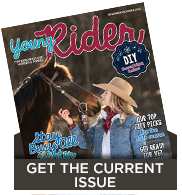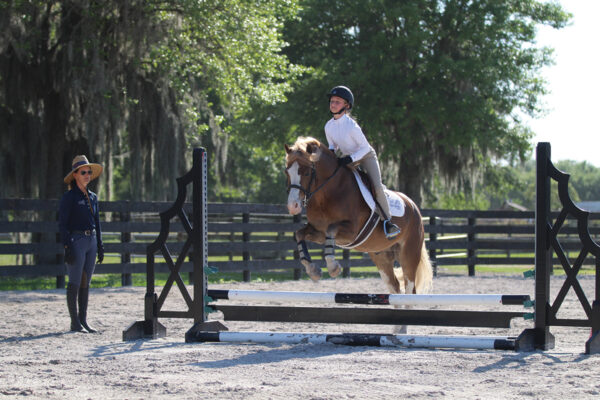
Arena etiquette can be thought of as the polite and respectful rules to follow when sharing a riding space with other riders and horses. It takes common sense and good judgement to develop your safety and riding manners in the arena.
Here, professional exhibitor and trainer Tara Martinez, pictured above, shares her insight on proper safety rules for every rider, regardless of your skill level. She owns Tarawin Farm in Parrish, Fla., a premier training facility that provides instruction, training, clinics and showing for riders in the hunter, jumper and equitation rings.
Rules of the Road
Tara recommends that you learn to think for yourself and be responsible for your actions by observing the following etiquette rules to help navigate any arena effectively.
◆ Stay off the rail and out of the way using the center of the arena to fix equipment, mount or dismount, talk to friends, or take a break.
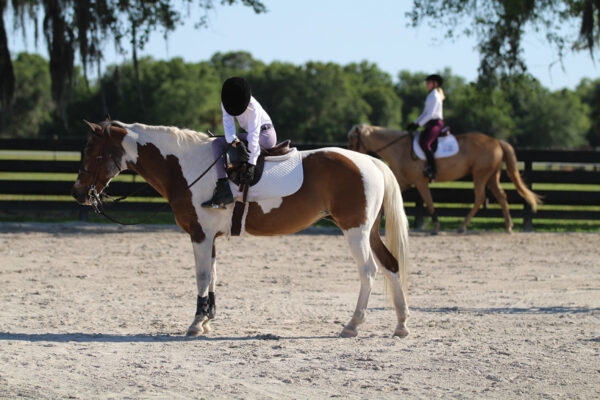
◆ Be aware of your surroundings and pay attention to what’s going on behind, alongside of and in front of your horse.
◆ Go with the flow: It’s easier and safer to ride in the same direction as the majority of traffic.
◆ Speak up and announce what you’re planning to do, and use words like “inside” and “outside” to announce your pass.
◆ Give right of way to any rider who is jumping—don’t stop or get in the way of the approach and landing areas near jumps.
◆ Less-skilled riders and lessoning students have the right of way—they’re the priority in the arena.
◆ Be mindful of longeing horses—never ride close or into their circling pattern.
◆ Keep your left shoulder to the other rider’s left shoulder when passing head-on, and try to avoid passing on the outside of a horse.
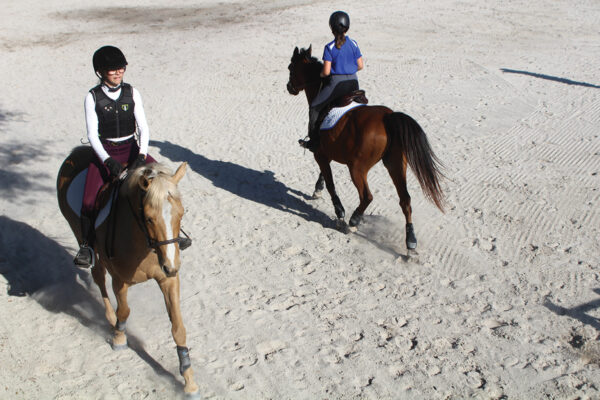
◆ Keep at least one horse length between you and another horse when passing or standing still.
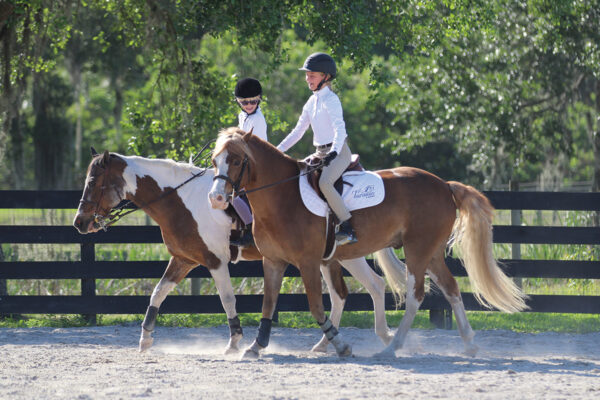
◆ Make sure to not cut off the horses you pass by giving your horse plenty of room to move back over to the rail.
◆ Know your horse. Let other riders know if your horse is a kicker and not to come up too close behind by tying a red bow in his tail.
Bonus Bows: A blue bow means your horse may act aggressively; a pink bow means your mare is in heat; a green bow stands for a young/less experienced horse; a white bow means your horse is for sale; and a yellow bow warns others you’re riding a stallion.
◆ Keep your voice commands, clucking and kissing sounds to a minimum around other horses. If you carry a whip, make sure it lies firmly across your upper leg on the inside-side of the arena and doesn’t touch or scare other horses nearby.
◆ When in doubt, dismount. This is safest if there’s any sign of trouble. For example, if another rider falls off and a loose horse is running around the arena, or any horse or rider seems out of control, dismount.
◆ Be courteous, respectful and ride with the Golden Rule in mind: Treat others as you would want to be treated.
Ready for Anything
“Riders should be self-sufficient and able to demonstrate good etiquette and control at the walk, trot and canter and be comfortable riding without their stirrups before riding independently,” says Tara.
“The quicker you realize any horse can spook, bolt and become anxious at any time, the better,” she continues. “Under the guidance of a trainer, you’ll learn how to prepare for and even prevent these unexpected behaviors by studying body language and recovery skills before any fear takes over. When you’re ready, it may be time to make new goals, such learning a new horse, riding in clinics and competing at shows.”
Tara likes to set up mock-shows as practice for riders at her barn.
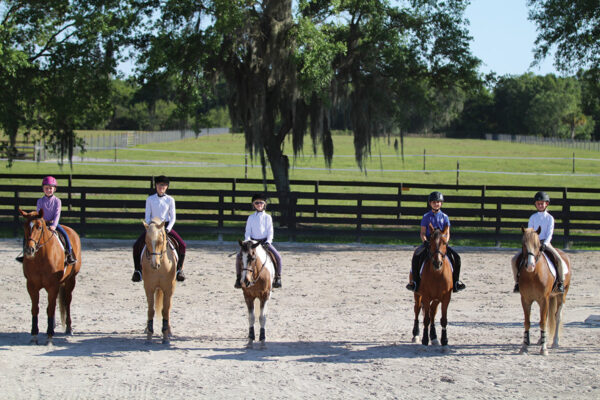
“I explain where the judge sits, how the announcer gives instructions, how to enter and exit the ring, and how to line up in the center,” she says. “I remind riders how to pass correctly, stay out of the way, and communicate with others during a class. We create situations that can really happen in schooling and show rings, and then we ride a pole or jumping course and go through a flat class for the full show experience.”
The next step for Tara’s riders is a horse-less trip to a real show, where they’ll watch the action in warmup rings and then the exact classes each rider will eventually enter.
“These day trips provide a great introduction to showing and can be used as a reminder to returning show-goers of what is expected,” she says. “This is a great learning environment where we can take our time and explore all aspects of competition. I answer any questions and discuss concerns right then and there, rather than waiting until the actual show day when things can seem overwhelmingly busy and exciting with show nerves.”
Tara will haul the horses to the showgrounds one day before the show to give everyone time to settle in and have a practice ride in the show ring.
“This allows both rider and horse a chance to get a feel for the atmosphere and deal with the new surroundings and noises before their real show debuts,” she says.
Top Takeaways
Tara suggests talking to your trainer, instructor or parent about any rule or etiquette problem you’re struggling with, and says it’s important to understand the right ways to avoid unsafe arena riding.
“Remember, this is going to take time and experience to learn,” she says. “Don’t get discouraged if a mishap happens—and trust me, accidents will happen—even the most skilled riders and horses make mistakes. Just keep your chin and eyes up, be patient and forgiving with yourself and your horse, and strive to be a better rider than the last time you entered the arena.”
This article about arena etiquette appeared in the July/August 2022 issue of Young Rider magazine. Click here to subscribe!

